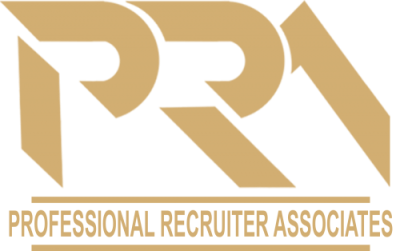5 Tips to Improve Employee Retention

The human capital in your company is the most valuable asset you have. Therefore, employee productivity and satisfaction tie directly to your financial success. The key for your business is understanding how to meet the challenges of current and future issues related to retention. Consider these five insider tips to help you shift your mindset about how to retain employees.
1. Take A Business Approach to Employee Retention
Companies spend a lot of time analyzing customer trends and return on investment from their client portfolio. The typical analysis includes:
- Where clients were acquired
- How clients were acquired
- The cost of acquiring the client
- Time onboarding new clients
- Client profitability
A similar approach works for analyzing employee performance. How much time do you spend reviewing the financial aspects of acquiring talent, onboarding new employees, and the ROI on your human capital?
Consider implementing data metrics next year that allow you to monitor employee performance, analyze the results, and make adjustments. This way, you can reward your highest performing employees and provide training for employees where there are gaps in their performance metrics. This will improve employee retention by acknowledging success and providing employees with more opportunities to grow in their role.
2. Implement Development Opportunities
If you have not already noticed, the workforce is getting younger. The misconception about this generation of workers is they are not driven and desire leisure mixed with work. In actuality, younger workers are seeking more training and development opportunities to grow in their current role and advance in their chosen profession.
The question for your company is: how much are you investing in developing your employees? This not only pertains to improving their productivity but also increasing the likelihood of retaining your top-performing employees by showing that you value them as a person. Look for a 6-to-12 month ongoing training or coaching program for employees as opposed to a one-time training event. This will help your employee address blindspots to create long-lasting change that will benefit your company and the employee.
3. Review Your Candidate Sourcing
Looking ahead to the future of recruitment, a significant issue for companies is that candidates have more choices and are better informed about your business than ever before. Your company needs to adjust to this trend by improving the candidate experience to ensure that you are attracting the highest-quality individuals available on the talent market.
In other words, you need to be smart about where your best performers and most tenured employees are coming from. This will help you understand how to monitor sourcing trends so that you know where to put resources to find new employees.
This should also feed into your onboarding processes when a new employee joins your company. This candidate-turned-employee is still evaluating your company and can influence the way your company is viewed in the marketplace.
Job boards and employer review websites have created more opportunities for businesses to attract top candidates. This future trend in referrals is significant for your company to become an employer of choice, helping improve your employee retention.
4. Focus on Developing Managers to Develop Employees
As part of this important mindset shift, business leaders need to focus on how employees fit with their managers. Too often businesses lose revenue and market share because they set up employees for failure by placing them with poor managers. Research indicates that employees leave managers, not companies. To improve employee retention, you need to focus on developing your managers so that they can develop their direct reports.
The other important element of matching up the right manager with the right employee is defining success. What typically happens is an employee will leave a company because they thought they were performing well, only to be blindsided by the results of a performance evaluation. Suddenly, the employee that you hired, trained, and poured knowledge into is out the door, increasing your costs from unwanted turnover.
Your managers need to set clear expectations for what success looks like for their direct reports, ensuring that employees understand their key performance indicators and how those KPIs are used to evaluate performance. If that is not already part of your company culture, it should be part of your growth plan for next year.
5. Establish a Culture of Retention
The final tip for your company is to establish a culture of retention. How is this achieved? Primarily, a culture of retention integrates your sourcing and recruitment strategy, onboarding process, and development program.
As the business leader, this top-down approach starts with you setting the tone in the following ways:
- Communicate your plan to improve employee retention
- Get buy-in from top leaders and managers
- Guide the implementation of this strategy
- Monitor the effectiveness via engagement, exit, and retention data
- Hold leaders and managers accountable for following through on the plan
If leaders and managers do not sense that you are committed to this plan, it will quickly fade out. That is why it is vital to make this plan part of the core of your business to create a culture that pours into your most valuable asset: the human capital in your company. Following a clearly-defined strategy for developing your employees is how you can improve key business metrics in 2021 to grow your company going forward.
This article was originally published on Zero Risk HR and has been edited for clarity

Professional Recruiter Associates